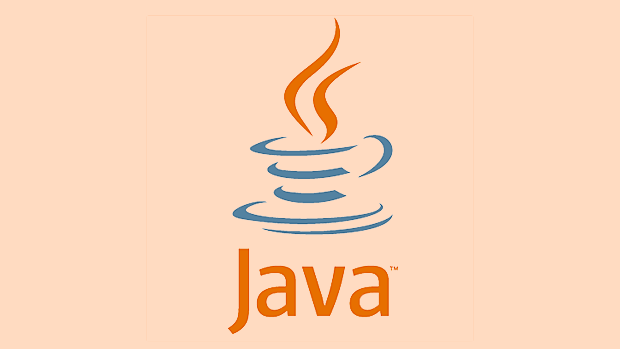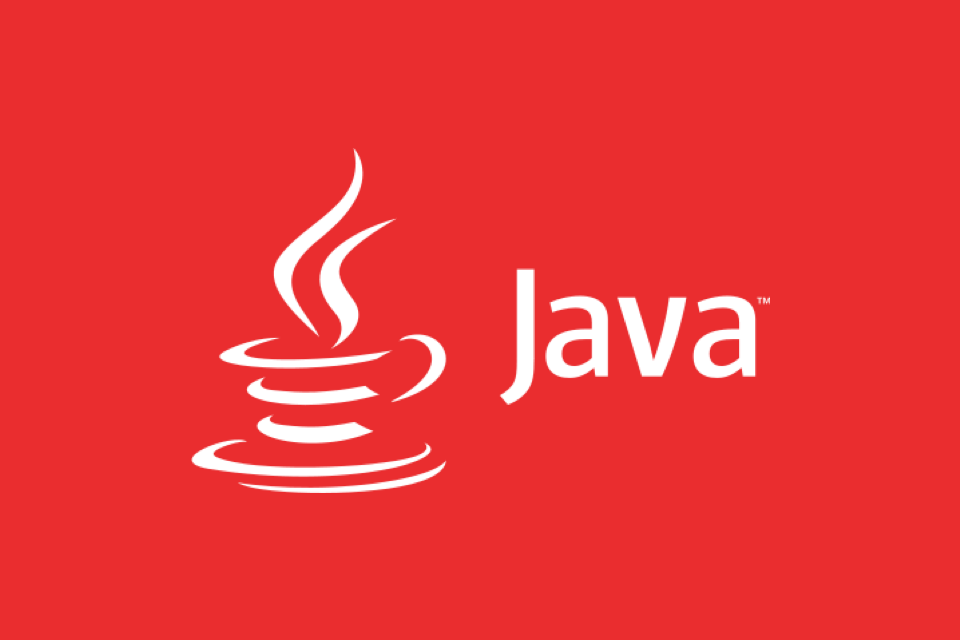The final keyword in Java enforces immutability at compile time and enables runtime optimizations by restricting reassignment of variables, methods, and classes; 2. For final fields, the Java Memory Model guarantees safe publication without synchronization, ensuring other threads see correctly initialized values due to write barriers and prevention of instruction reordering; 3. The JVM inserts memory fences after constructor completion for final fields, preventing caching issues across threads and eliminating the need for volatile or synchronized for safe publication; 4. Compiler optimizations include constant folding and inlining for static final constants, reducing runtime field access; 5. Escape analysis benefits from final fields, enabling stack allocation of objects when immutability is assured; 6. Final methods and classes allow devirtualization, enabling aggressive JIT inlining since method overriding is prohibited; 7. However, final only makes the reference immutable, not the object itself, so true immutability requires final fields pointing to immutable objects and no state-modifying methods; 8. The use of final provides both concurrency safety and performance improvements by allowing the JVM to make stronger assumptions about program behavior, making it a powerful mechanism beyond mere syntactic restriction.

The final keyword in Java is more than just a way to prevent reassignment—it influences how the Java compiler and JVM behave, and it has implications at both the language and runtime levels. Understanding its internals helps explain not only what final does, but why it matters for performance, concurrency, and memory model guarantees.

What final Actually Does (Under the Hood)
At its core, final is a compile-time and runtime enforcement mechanism that restricts mutation and enables certain optimizations. It can be applied to variables, methods, and classes, each with different effects.
When applied to variables, final ensures that:

- The variable must be assigned exactly once.
- Once assigned, it cannot be reassigned.
For fields, this becomes especially important in the context of object construction and thread safety.
public class Example {
final int value;
public Example(int value) {
this.value = value; // Must be assigned once
}
}The compiler enforces that value is assigned in all constructors. If you try to assign it again later, it’s a compile-time error.

But the real magic happens at the JVM level.
final Fields and the Java Memory Model
One of the most important internal aspects of final is how it interacts with the Java Memory Model (JMM), especially in multi-threaded environments.
According to the JMM:
A properly constructed object with
finalfields guarantees that those fields are safely published—meaning other threads will see their correctly initialized values, without needing additional synchronization.
This is achieved through special rules around final field semantics during object construction.
How It Works Internally
Write Barrier on Final Field Assignment
When afinalfield is assigned during construction, the JVM inserts a write barrier (a memory fence) after the constructor finishes. This prevents reordering of writes tofinalfields with respect to the assignment of the object reference to other threads.No Caching of Final Fields Across Threads
Unlike regular fields, threads are guaranteed to see the initial value of afinalfield, even if they access the object via data races (which are technically allowed forfinalfields as long as the object is safely published).No Need for
volatileorsynchronizedfor Safe Publication
If an object’sfinalfields are set during construction and the object reference doesn’t escape during construction (i.e., nothisreference leaked), then other threads will see the correct values—no extra synchronization needed.
// Thread-safe due to final field semantics
public class ImmutablePoint {
public final int x, y;
public ImmutablePoint(int x, int y) {
this.x = x;
this.y = y;
}
}Even if another thread gets a reference to an ImmutablePoint without synchronization, it will see the correct x and y.
This is a critical optimization used in classes like String, Optional, and other immutable types.
Compiler Optimizations Enabled by final
The final keyword gives the compiler and JIT more freedom to optimize code.
1. Constant Folding and Inlining
If a final variable is a compile-time constant (e.g., static final int MAX = 100;), the compiler may:
- Inline the value directly into calling code.
- Eliminate the field entirely (no field access at runtime).
static final int TIMEOUT = 5000; // Used as: Thread.sleep(TIMEOUT); // May become: Thread.sleep(5000); at compile time
This reduces memory access and improves performance.
2. Escape Analysis and Stack Allocation
The JVM uses escape analysis to determine if an object can be allocated on the stack instead of the heap. final fields help because their immutability makes it easier for the JVM to prove that the object’s state won’t be modified or observed externally.
3. Devirtualization
For final methods and classes, the JIT can inline method calls because there’s no possibility of overriding.
final class MathUtils {
static int add(int a, int b) {
return a b;
}
}Since MathUtils can’t be subclassed, any call to add() can be inlined aggressively.
Similarly, a final method in a non-final class prevents override, allowing similar optimizations.
final vs. Immutable Objects
It’s important to note: final on a reference doesn’t make the object immutable.
final List<String> list = new ArrayList<>();
list.add("item"); // Allowed! The *reference* is final, not the objectThe final keyword only prevents reassigning list. It doesn’t freeze the object itself.
True immutability requires:
-
finalfields. - Those fields referring to immutable objects (e.g.,
String,Integer) or defensive copies. - No methods that modify internal state.
Internals Summary: What Happens at Each Level
Use of final
|
Compiler Action | JVM/Runtime Effect |
|---|---|---|
final variable |
Prevents reassignment | No runtime cost; just a compile-time check |
final field |
Ensures definite assignment | Enables safe publication via memory model rules |
static final const |
Inlines value (if constant expression) | No field access at runtime |
final method |
Prevents override | Enables method inlining and devirtualization |
final class |
Prevents inheritance | Improves optimization opportunities |
Practical Implications
- Use
finalon fields whenever possible—especially in immutable classes. - It’s not just about intent; it provides real thread-safety guarantees.
- Combine with
privateand proper construction to ensure encapsulation. - Don’t assume
final= immutable—check object mutability too.
Basically, final isn’t just a restriction—it’s a contract that enables the JVM to make stronger assumptions about your code, leading to safer concurrency and better performance. The internals are subtle but powerful.
The above is the detailed content of The Internals of the Java `final` Keyword. For more information, please follow other related articles on the PHP Chinese website!

Hot AI Tools

Undress AI Tool
Undress images for free

Undresser.AI Undress
AI-powered app for creating realistic nude photos

AI Clothes Remover
Online AI tool for removing clothes from photos.

Clothoff.io
AI clothes remover

Video Face Swap
Swap faces in any video effortlessly with our completely free AI face swap tool!

Hot Article

Hot Tools

Notepad++7.3.1
Easy-to-use and free code editor

SublimeText3 Chinese version
Chinese version, very easy to use

Zend Studio 13.0.1
Powerful PHP integrated development environment

Dreamweaver CS6
Visual web development tools

SublimeText3 Mac version
God-level code editing software (SublimeText3)
 Asynchronous Programming Techniques in Modern Java
Jul 07, 2025 am 02:24 AM
Asynchronous Programming Techniques in Modern Java
Jul 07, 2025 am 02:24 AM
Java supports asynchronous programming including the use of CompletableFuture, responsive streams (such as ProjectReactor), and virtual threads in Java19. 1.CompletableFuture improves code readability and maintenance through chain calls, and supports task orchestration and exception handling; 2. ProjectReactor provides Mono and Flux types to implement responsive programming, with backpressure mechanism and rich operators; 3. Virtual threads reduce concurrency costs, are suitable for I/O-intensive tasks, and are lighter and easier to expand than traditional platform threads. Each method has applicable scenarios, and appropriate tools should be selected according to your needs and mixed models should be avoided to maintain simplicity
 Best Practices for Using Enums in Java
Jul 07, 2025 am 02:35 AM
Best Practices for Using Enums in Java
Jul 07, 2025 am 02:35 AM
In Java, enums are suitable for representing fixed constant sets. Best practices include: 1. Use enum to represent fixed state or options to improve type safety and readability; 2. Add properties and methods to enums to enhance flexibility, such as defining fields, constructors, helper methods, etc.; 3. Use EnumMap and EnumSet to improve performance and type safety because they are more efficient based on arrays; 4. Avoid abuse of enums, such as dynamic values, frequent changes or complex logic scenarios, which should be replaced by other methods. Correct use of enum can improve code quality and reduce errors, but you need to pay attention to its applicable boundaries.
 Understanding Java NIO and Its Advantages
Jul 08, 2025 am 02:55 AM
Understanding Java NIO and Its Advantages
Jul 08, 2025 am 02:55 AM
JavaNIO is a new IOAPI introduced by Java 1.4. 1) is aimed at buffers and channels, 2) contains Buffer, Channel and Selector core components, 3) supports non-blocking mode, and 4) handles concurrent connections more efficiently than traditional IO. Its advantages are reflected in: 1) Non-blocking IO reduces thread overhead, 2) Buffer improves data transmission efficiency, 3) Selector realizes multiplexing, and 4) Memory mapping speeds up file reading and writing. Note when using: 1) The flip/clear operation of the Buffer is easy to be confused, 2) Incomplete data needs to be processed manually without blocking, 3) Selector registration must be canceled in time, 4) NIO is not suitable for all scenarios.
 How Java ClassLoaders Work Internally
Jul 06, 2025 am 02:53 AM
How Java ClassLoaders Work Internally
Jul 06, 2025 am 02:53 AM
Java's class loading mechanism is implemented through ClassLoader, and its core workflow is divided into three stages: loading, linking and initialization. During the loading phase, ClassLoader dynamically reads the bytecode of the class and creates Class objects; links include verifying the correctness of the class, allocating memory to static variables, and parsing symbol references; initialization performs static code blocks and static variable assignments. Class loading adopts the parent delegation model, and prioritizes the parent class loader to find classes, and try Bootstrap, Extension, and ApplicationClassLoader in turn to ensure that the core class library is safe and avoids duplicate loading. Developers can customize ClassLoader, such as URLClassL
 Handling Common Java Exceptions Effectively
Jul 05, 2025 am 02:35 AM
Handling Common Java Exceptions Effectively
Jul 05, 2025 am 02:35 AM
The key to Java exception handling is to distinguish between checked and unchecked exceptions and use try-catch, finally and logging reasonably. 1. Checked exceptions such as IOException need to be forced to handle, which is suitable for expected external problems; 2. Unchecked exceptions such as NullPointerException are usually caused by program logic errors and are runtime errors; 3. When catching exceptions, they should be specific and clear to avoid general capture of Exception; 4. It is recommended to use try-with-resources to automatically close resources to reduce manual cleaning of code; 5. In exception handling, detailed information should be recorded in combination with log frameworks to facilitate later
 How does a HashMap work internally in Java?
Jul 15, 2025 am 03:10 AM
How does a HashMap work internally in Java?
Jul 15, 2025 am 03:10 AM
HashMap implements key-value pair storage through hash tables in Java, and its core lies in quickly positioning data locations. 1. First use the hashCode() method of the key to generate a hash value and convert it into an array index through bit operations; 2. Different objects may generate the same hash value, resulting in conflicts. At this time, the node is mounted in the form of a linked list. After JDK8, the linked list is too long (default length 8) and it will be converted to a red and black tree to improve efficiency; 3. When using a custom class as a key, the equals() and hashCode() methods must be rewritten; 4. HashMap dynamically expands capacity. When the number of elements exceeds the capacity and multiplies by the load factor (default 0.75), expand and rehash; 5. HashMap is not thread-safe, and Concu should be used in multithreaded
 Explained: Java Polymorphism in Object-Oriented Programming
Jul 05, 2025 am 02:52 AM
Explained: Java Polymorphism in Object-Oriented Programming
Jul 05, 2025 am 02:52 AM
Polymorphism is one of the core features of Java object-oriented programming. Its core lies in "one interface, multiple implementations". It implements a unified interface to handle the behavior of different objects through inheritance, method rewriting and upward transformation. 1. Polymorphism allows the parent class to refer to subclass objects, and the corresponding methods are called according to the actual object during runtime; 2. The implementation needs to meet the three conditions of inheritance relationship, method rewriting and upward transformation; 3. It is often used to uniformly handle different subclass objects, collection storage and framework design; 4. When used, only the methods defined by the parent class can be called. New methods added to subclasses need to be transformed downward and accessed, and pay attention to type safety.
 Effective Use of Java Enums and Best Practices
Jul 07, 2025 am 02:43 AM
Effective Use of Java Enums and Best Practices
Jul 07, 2025 am 02:43 AM
Java enumerations not only represent constants, but can also encapsulate behavior, carry data, and implement interfaces. 1. Enumeration is a class used to define fixed instances, such as week and state, which is safer than strings or integers; 2. It can carry data and methods, such as passing values ??through constructors and providing access methods; 3. It can use switch to handle different logics, with clear structure; 4. It can implement interfaces or abstract methods to make differentiated behaviors of different enumeration values; 5. Pay attention to avoid abuse, hard-code comparison, dependence on ordinal values, and reasonably naming and serialization.






